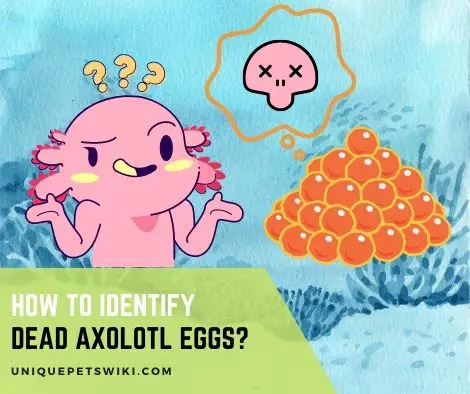If you have removed your axolotls’ eggs from the tank to incubate them separately, it is important to know if they are developing properly.
That makes it important to answer the question – ‘how do you know if axolotl eggs are dead?’. After all; you want to remove the dead eggs promptly, otherwise they could harm the healthy, viable eggs.
In this guide, we tell you exactly how to identify axolotl eggs that are dead.
Contents
3 Signs That Your Axolotl Eggs are Dead
The color, shape, and presence or absence of air bubbles are three factors to observe in order to tell if your axolotl eggs are dead or alive..
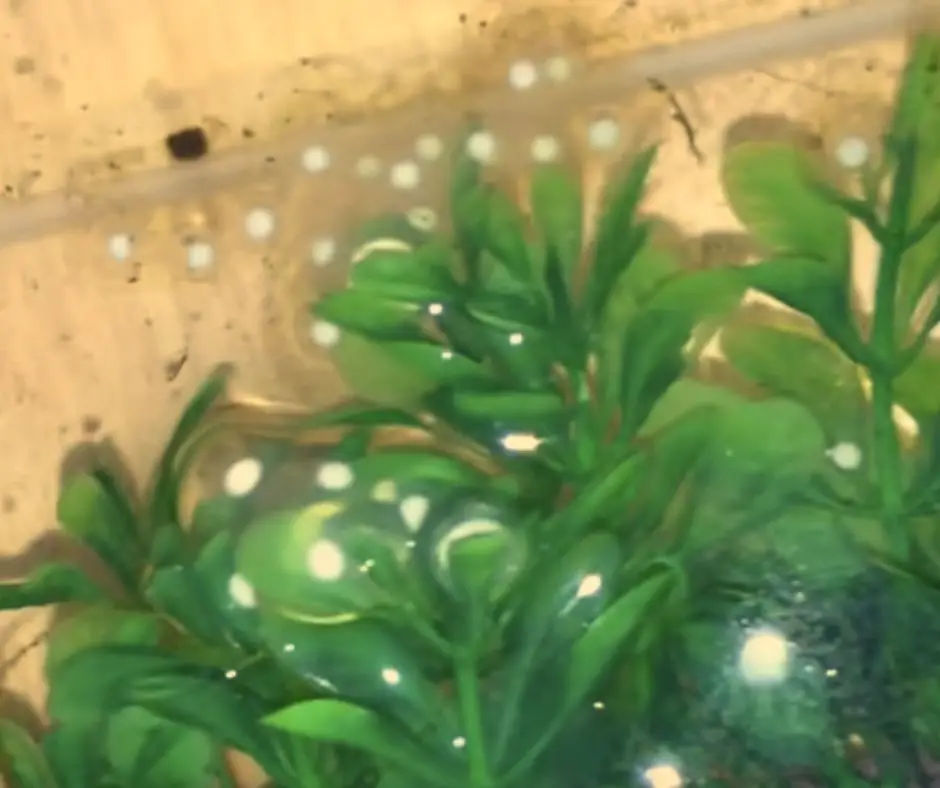
Color
Eggs that are white, grey, or moldy are likely dead. On the other hand, fertilized, healthy, and live axolotl eggs will have a solid black or white sphere within their transparent casing.
Fertilized, living eggs are also noticeably darker or blacker than spoilt or dead eggs.
Shape and Size
In dead axolotl eggs, the transparent casing develops a cylindrical shape while living ones have a spherical shape.
Fertilized, live eggs are also usually larger than dead eggs. Live, healthy eggs typically measure about 1.1 cm while dead eggs won’t measure over 0.2 cm in length.
Bubbles and Moldy Fuzz
Dead eggs could develop a moldy fuzz on them. Also, dead eggs tend to have air bubbles in the egg pack or the casing.
If you notice these signs, please remove the eggs immediately.
What Causes Axolotl Eggs to Die?
Several factors can cause death in axolotl eggs such as birth defects, harmful environmental conditions, or shaking or impact during the transportation of the eggs.
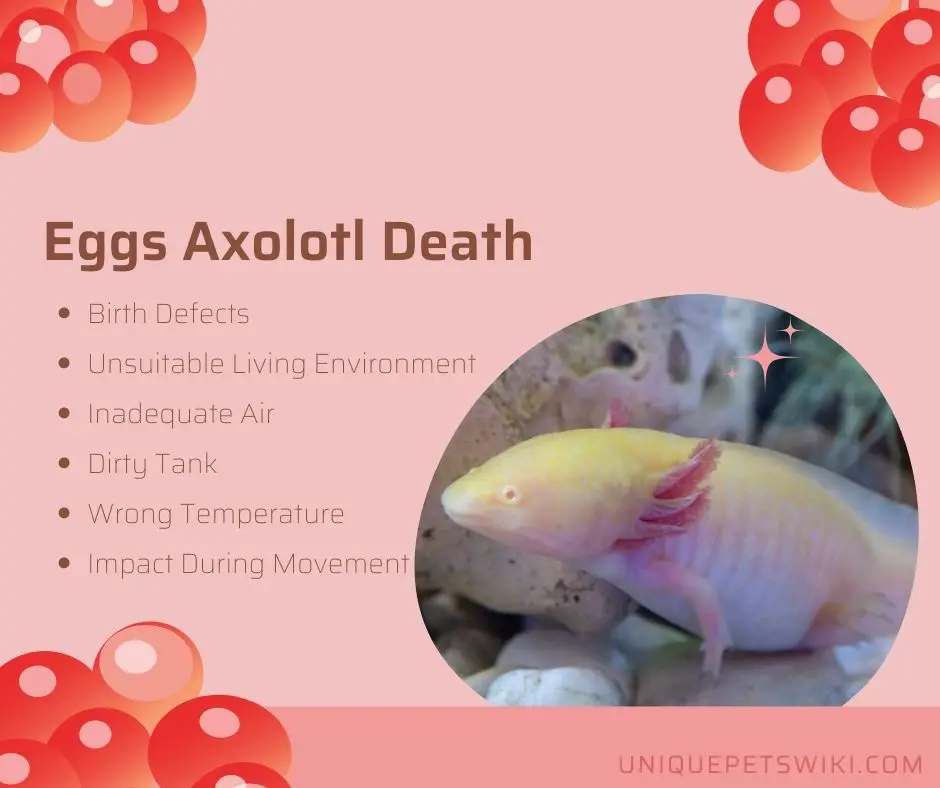
Genetic Abnormalities or Birth Defects
Genetic defects or birth abnormalities can cause the death of axolotl eggs before the embryo can develop. Since female axolotls tend to lay almost 1000 eggs, the chances of some of them having birth defects can be extremely high.
Also, If you have housed a single female axolotl in your tank, she could lay unfertilized eggs. Axolotls, like other amphibians, use a method known as parthenogenesis to lay eggs.
This means that the male and female axolotls do not have to have sexual contact for the female of the species to lay eggs.
So, if you notice your female Axie laying eggs, those eggs won’t be fertilized and they won’t hatch. However, you must still remove the eggs right away as they could rot or develop mold which can harm your axolotl by spoiling the water quality and spreading diseases.
Poor Water Quality or Harmful Environmental Conditions
Axolotl larvae and eggs are highly sensitive to their environment and water conditions and might die if these are unsuitable. Poor water conditions can cause the eggs to get infected or moldy and that can kill the embryo before it develops.
Temperature fluctuations can also result in the death of axolotl eggs as they hamper the development of the embryo.
Dirty tanks with algae buildup and unhygienic conditions can cause pathogens to infect the eggs impeding their development and killing the embryo.
Similarly, poor oxygenation or the lack of air bubbles can cause the eggs to suffocate and die.
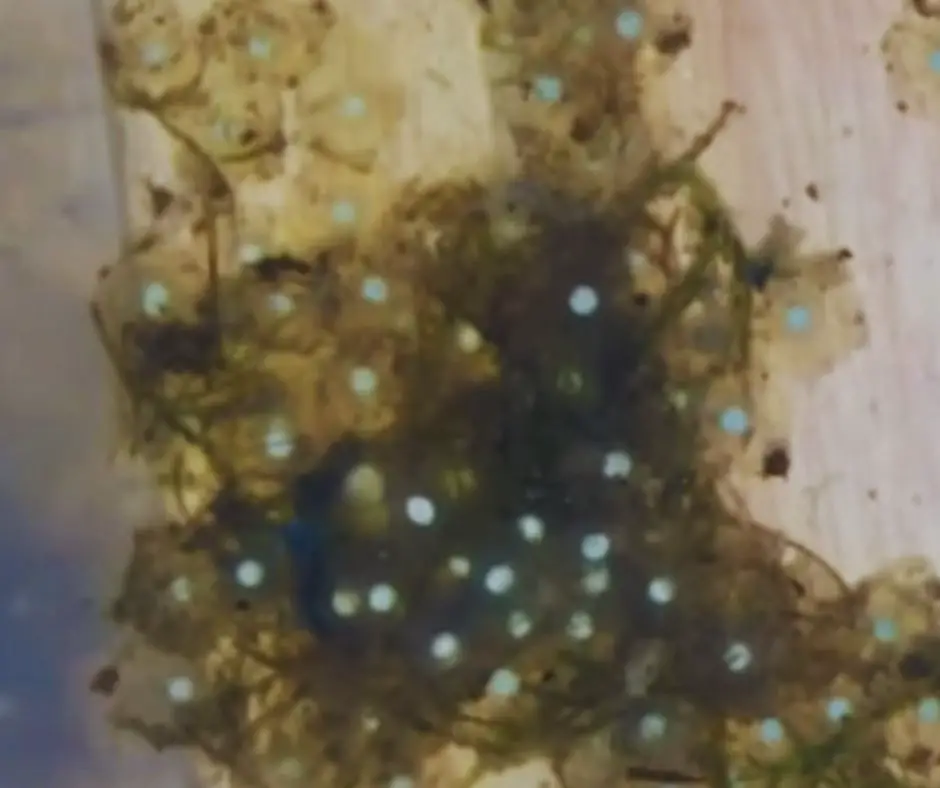
Impact During Transfer or Improper Handling
If you accidentally shake the eggs or cause an impact while transferring them from the tank to the quarantine container, then too, the delicate casing can break and kill the embryo before it develops. Improper handling is often the major cause of death in axolotl eggs.
Cannibalistic Tendencies in Axolotls and Other Predators
If you haven’t transferred your axolotls’ eggs from the main tank to a separate tank, then there is a chance that the adult axolotls could eat their own eggs.
Also, other predators like goldfish, guppies, and cichlids are known to eat axolotl eggs.
What Should You Do With Dead Axolotl Eggs?
You should promptly remove dead axolotl eggs since the adult axolotls and other fish in the tank could eat them. Also, there is a chance that the eggs are infected with mold or are carrying infections that could harm the other tank inhabitants.
Moreover, unfertilized or dead eggs can spoil your tank’s water and throw off the tank’s parameters. Therefore, it is important to remove dead axolotls eggs immediately
Note: You should ensure your hands are free from any smell when removing the eggs.
Furthermore, ensure that you don’t touch live eggs with soap or hot water to help prevent reducing the oxygen level in the tank.
How Do You Keep Axolotl Eggs Alive?
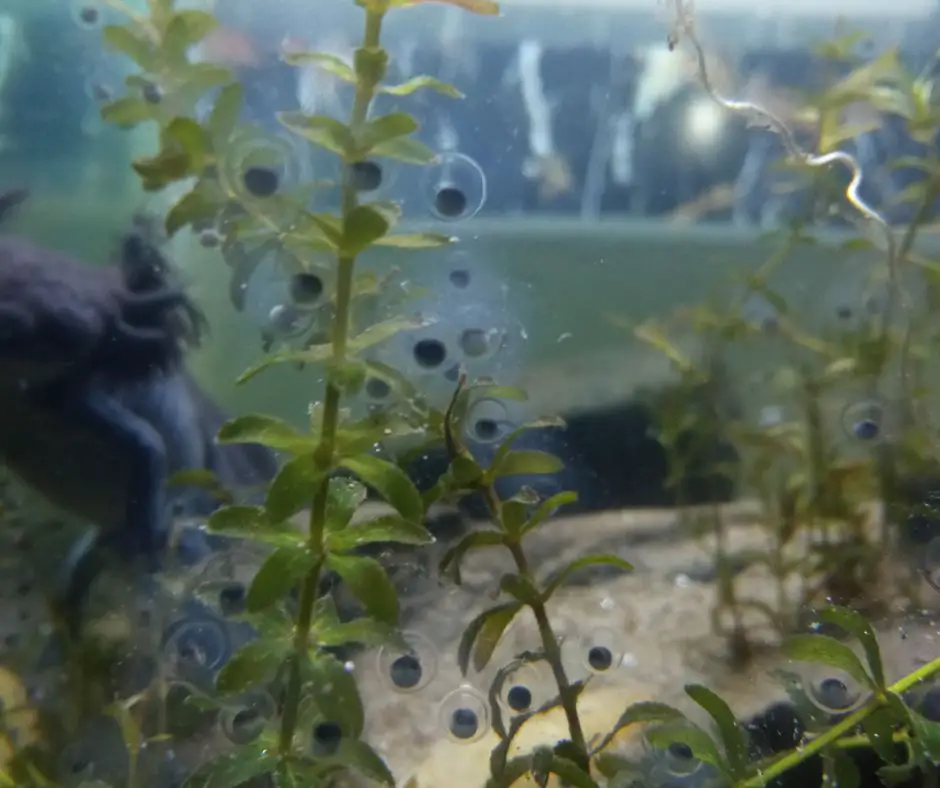
To keep axolotl eggs alive, you must first consider their survival rate. If the rate of survival is high, then you can take the next steps to incubate them. You will also need to decide how many eggs to incubate.
Consideration of these factors is very important to ensure success. Once you have decided on these factors, here are the steps to take (according to experts):
- Place the eggs in a separate container. The container should be shallow and clean.
- Fill it up with clean, cool, de-chlorinated water.
- Avoid shaking or banging the eggs during transfer.
- You need to submerge the eggs completely, so fill up the container with water to the top.
- Spread the eggs out so each egg has room to grow and develop. This will also ensure adequate aeration of each egg.
- Make daily water changes. Only used de-chlorinated, cool water at a temperature of 18-22 C or 77 F. The water pH should be around 7.4 to 7.6.
- Keep an eye on the eggs, sort out the dead ones, and remove them right away. This is essential to keep the live eggs healthy.
Tetra Whisper EX Silent Multi-Stage Power Filter for Aquariums
- WHISPER QUIET The Tetra Whisper EX Power Filter provides silent multi-stage filtration for clear clean water .SIZE This filter fits 45 to 70 gallon aquariums - 240 GPH
- FAST SETUP Sets up easily right out of the box – no priming required
- CONTINUOUS FLOW Moves water continuously to prevent debris buildup
- NO-MESS FILTER CARTRIDGE CHANGES Design minimizes dripping to make cartridge changes easy
- SIZE This filter fits 45 to 70 gallon aquariums - 240 GPH
Last update on 2022-12-29 / Affiliate links / Images from Amazon Product Advertising API
FAQs
How long do axolotl eggs take to hatch?
At room temperature, your axolotl’s eggs should hatch in 2-3 weeks. You may also delay the hatching a bit by using cooler water ( at around 16-18 C or 64-68 F). This will give you time to prepare for the larvae’s feeding, etc.
How many eggs do axolotls lay? How many axolotl eggs should I keep?
A female axolotl could lay between 300-1000 eggs. How many axolotl eggs you keep is entirely your decision. Some hobbyists keep up to 100 eggs in a 20-gallon tank.
Conclusion
Dead axolotl eggs may be white or moldy. They are also cylindrical in shape and may be smaller than fertilized, healthy eggs. Healthy or live eggs are usually darker and larger than dead ones. We hope this guide helps you successfully hatch your axolotl eggs!
Also read: Where Can I Buy Axolotl Eggs?
